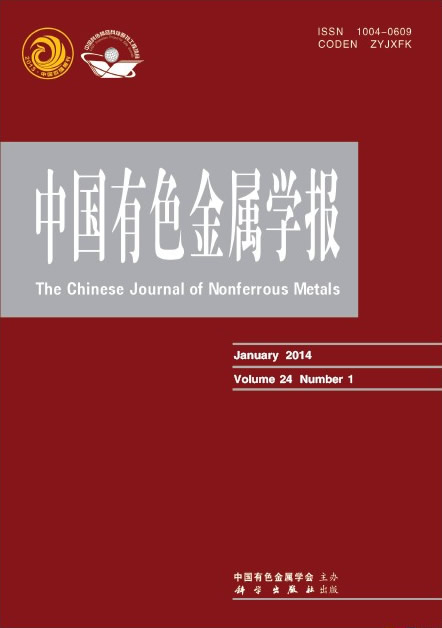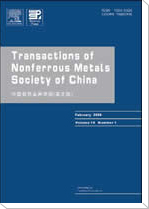有限元分析
(1.大连海事大学 材料工艺研究所,大连 116026;
2.大连海事大学 轮机工程学院, 大连 116026)
摘 要: 采用多线性弹性和双线性等向强化两种材料模型, 对在法向力载荷作用下的TiNi形状记忆合金进行有限元模拟。结果表明:多线性弹性模型不适合用来分析TiNi合金的超弹性; 而通过用最大弹性变形量(与屈服极限对应的极限应变值)来模拟TiNi合金的超弹性, 采用双线性等向强化模型可以描述TiNi合金的超弹性与产生的最大Von Mises弹性应变及最大Von Mises塑性应变之间的关系, 能够为以TiNi合金作为机敏材料、 耐磨材料及耐磨膜层材料设计提供依据。 最后, 在该材料模型下, 将用有限元方法与用纳米力学探针得到的位移与载荷关系曲线进行对比,两者相差不大。
关键字: 材料模型; TiNi形状记忆合金; 超弹性; 有限元; 机敏材料; 耐磨材料
(1. Institute of Material and Technology,
Dalian Maritime University,Dalian 116026, China;
2. Marine Engineering College,
Dalian Maritime University,Dalian 116026, China)
Abstract:Two different material models(mutilinear elastic model and bilinear isotropic hardening model) were used to carry out the finite element analysis of TiNi shape memory alloy with pseudoelasticity feature under normal force load. The results show that the mutilinear elastic model is not appropriate for analyzing the pseudoelasticity of TiNi alloy, but through using the maximum elastic deformation (the strain value at the yield point) to simulate the pseudoelasticity of TiNi shape memory alloy, the bilinear isotropic hardening model can describe the relationships between the pseudoelasticity of TiNi shape memory alloys and strains including elastic strain and plastic strain. The results gotten from this analysis using the bilinear isotropic hardening model can be used to provide the reference for designing TiNi alloy as smart material and anti-wear material. Finally, under the bilinear isotropic hardening model, the relationship between load and displacement gotten from FEM was compared with that derived from nanoindenter, results indicate that they are at close range.
Key words: material model; TiNi shape memory alloys; pseudoelasticity; finite element; smart material; anti-wear material


